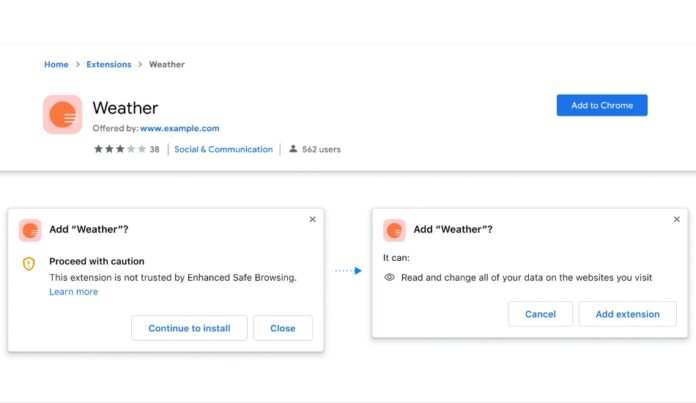Google wants to protect your data and save you from phishing attacks on your devices, and as a result, the company released a new feature for Google Chrome called ‘Enhanced Safe Browsing’ last year. This feature is now gaining new capabilities to inform users about downloads that can put your data at risk.
The ‘Enhanced Safe Browsing’ feature was introduced by Google last year with Chrome 83. It was released as a new option for users who require or want a more advanced level of security while browsing the web. Turning on Enhanced Safe Browsing will substantially increase protection from dangerous websites and downloads, as per Google.
Enhanced Safe Browsing users are successfully phished 35% less than other users per the company’s stats. Starting with Chrome 91, Google is rolling out new features to help Enhanced Safe Browsing users better choose their extensions and offer additional protection against downloading malicious files on the web.
Enhanced Safe Browsing will now offer additional protection when installing a new extension from the Chrome Web Store. A dialogue will now appear to inform users if an extension they are about to install is not a part of the list of extensions trusted by Enhanced Safe Browsing.
Google says that any extensions built by a developer who follows the Chrome Web Store Developer Program Policies will be considered trusted by Enhanced Safe Browsing. It should take at least a few months of respecting these conditions to become trusted for new developers.

For enhanced download protection, Google Chrome will now perform a first-level check with Google Safe Browsing using metadata about the downloaded file, such as the digest of the contents and the source of the file, to determine whether it’s potentially suspicious. If the files seem untrusted or malicious, the users will be given an option to send the file to Google for a more in-depth analysis.
“If you choose to send the file, Chrome will upload it to Google Safe Browsing, which will scan it using its static and dynamic analysis classifiers in real-time. After a short wait, if Safe Browsing determines the file is unsafe, Chrome will display a warning. As always, you can bypass the warning and open the file without scanning. Uploaded files are deleted from Safe Browsing a short time after scanning”, said Google.


